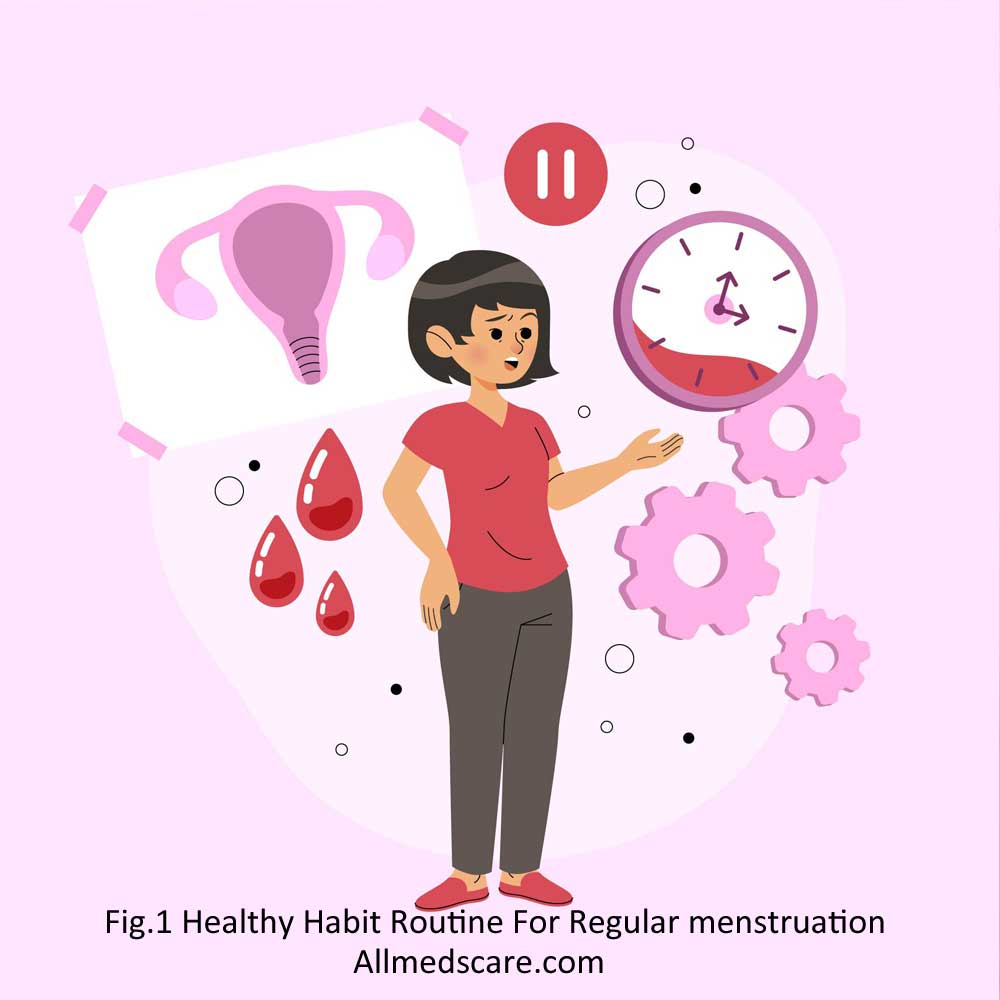
Healthy Habit Routine For Regular menstruation
Regular menstruation is a natural process in which a woman’s body prepares for pregnancy. It is a common symptom for any woman to experience fatigue and pain during it. In such situations, women like to relax as much as possible. It usually lasts between 21-35 days and consists of four phases: the menstrual cycle, the follicular phase, ovulation, and the luteal phase. This cycle starts on the first day of your period and ends when your next period starts.
Understanding this natural process can help you better plan around it each month, so you can be prepared for any physical or emotional changes that occur during the different phases of your cycle. Being aware of how your body works allow you to control any pain or discomfort that may arise as well as learn more about yourself on a deeper level.

The Benefits of Working With Your Period
One of the most important benefits of working with your period is a better understanding of your body and its needs. If you know how your monthly cycle works, you can plan activities around each month. So you can be prepared for the physical changes that occur during the different phases of your cycle. This activity planning can help reduce the discomfort and pain associated with your period, and can also provide insight into any irregularities that may lead to a doctor.
Another significant advantage of this practice is learning to tune into your body during the menstrual cycle. You can pay close attention to what your body is trying to tell you through symptoms, cravings, and energy levels. This increased awareness enables more self-care activities, such as getting enough sleep, eating wholesome meals, exercising frequently, and learning appropriate coping mechanisms for pressures.
If one has a regular menstrual cycle, it has many benefits. For example, tracking one’s cycle phases allows one to plan work or social engagements during peak performance times when they are energized and motivated. For instance, they may schedule intense workouts during the ovulation phase or take time off if they feel too tired or experience other premenstrual symptoms like depression or irritability. Overall, menstrual awareness gives women more control over their bodies. And at the same time prevents them from uncontrolled hormonal shifts.
How to Create a Routine Around Your Menstrual Cycle
Creating a routine for your period can have many benefits and encourages regular menstruation. Its main benefit is to prepare for menstruation and any physical or emotional changes that come with it. Before establishing your routine, it is important to learn about the cycle phases. Any pain or discomfort caused by these changes can be better managed by you. And you can better understand what your body needs during your period if you organize it every month.
Along with understanding how your menstrual cycle works, it’s important to consider exercise and nutritional advice. For the first two weeks, focus on high-intensity exercises like running, or HIIT workouts. Which can give you an extra energy boost due to the increase in endorphins throughout the body. Do low-impact aerobic exercises, such as walking or swimming, during the last two weeks of the luteal phase. Because they are easy even with some movement on the body. Yoga is also another great exercise that can help you relax if you feel overwhelmed by premenstrual symptoms like depression or irritability.
Always consider eating nutritious foods, such as fresh fruits and vegetables, over meals. Because eating nutrient-dense foods rich in vitamins and minerals supports hormonal health. Additionally, if blood flow increases during menstruation, include more iron in your diet than usual as your body’s iron levels drop significantly during that time. Also, avoid drinking alcohol, as it can dehydrate you and cause cramps later in your cycle. It is not for women who follow this advice
Tips On How to Find Balance & Manage Stress for Regular Menstruation Cycle
You may want to incorporate self-care into your routine to de-stress. Like taking time to relax and do things you love. And it’s also important to figure out how to deal with any period-related physical issues that increase your stress levels. For example, regular exercise can help reduce cramps and swelling and increase endorphin levels, which can improve mood. However, you should adjust your level of exertion based on the stage of your cycle (for example, during the luteal phase, engage in low-impact cardio exercises such as walking or swimming).
During this period, due to overdoing, one has to face a difficult situation, so we need to plan it. So make a list of coping skills that you find most effective so that you can use them when needed. Mindfulness practices such as deep breathing exercises, yoga, and grounding techniques such as being surrounded by warm light or feeling the sand between your toes can help reduce anxiety.
The Best Practices for Taking Care of Yourself for Regular Menstruation
When menstruation cramps begin, using heat is a fantastic home treatment. Heat therapy can take many different forms, such as consuming a cup of warm tea or applying a heating pad or hot water bottle to the abdomen. Yoga and other moderate stretching exercises are excellent for easing muscle pain, which can lessen the discomfort felt during this time.
It is important that you get enough rest at night to reduce your premenstrual syndrome (PMS) symptoms and promote health during your period. Because fatigue often exacerbates the already heightened emotions associated with PMS.
Omega-3 fatty acid supplementation also decreases inflammation brought on by hormonal swings and helps maintain hormone balance throughout all periods of the menstrual cycle.






